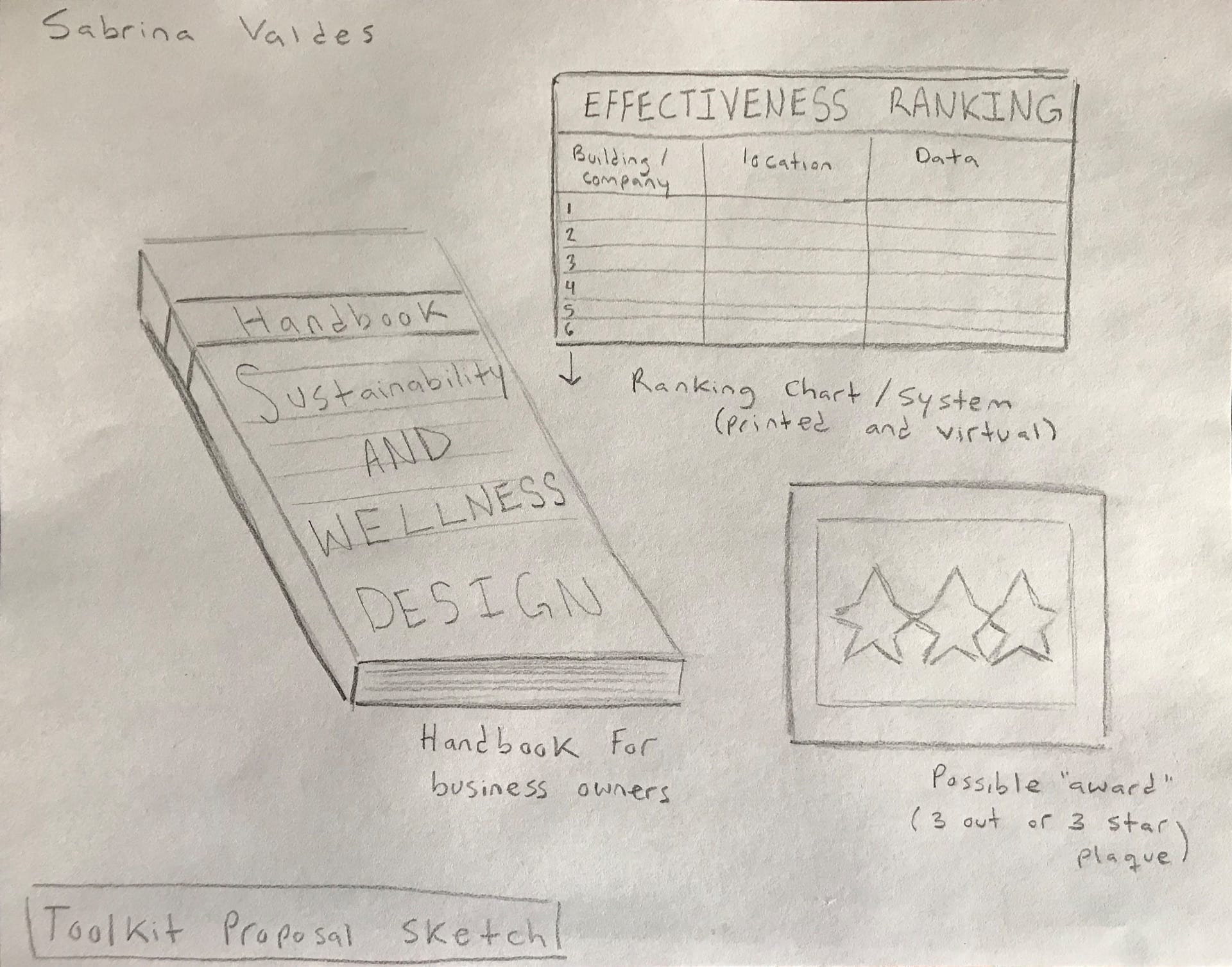Toolkit Proposal
The wicked problem I have chosen to address is poor mental health amongst employees in the workplace. This problem is comprised of various components, but a decent percentage of these actually have to do with the space’s interior and can be worked on through sustainable means. By addressing mental health in the workplace, business owners can avoid things such as low productivity levels, excessive tardiness, absenteeism, increased accidents/mistakes, workplace violence, and (in some cases) even claims of harassment and discrimination. As if this wasn’t convincing enough, it has also been calculated by the Partnership for Workplace for Mental Health and the American Psychiatric Foundation that it costs companies in the United States $44 billion each year in lost productivity due to untreated depression in the workforce.
This toolkit is meant to be designed for companies looking to better themselves and the health of their employees (in a sustainable way), and will impact the companies at large while specifically being handled by the business owners themselves. Consider how factors like lighting, air quality, clean water, healthy food, regular activity, and others affect the wellbeing of mankind – and then think about the numerous possibilities corporations have when it comes to addressing these things within the working environment. This toolkit and its elements/tools will improve the wicked problem by educating others on how to best create healthy environments for the working members of our society, promoting both wellness and sustainability.
As for what is actually in this “toolkit”? The toolkit will be comprised of a virtual handbook (a website) for business owners explaining sustainable and healthy changes that can be made in the workplace as well as both a printed and virtual list that ranks all participating businesses from most effective to least effective according to the handbook. For the handbook/website, I plan on breaking potential changes down into categories to help simplify things. For example, there may be categories such as stress relief methods, mental health resources, physical activities, how to incorporate green spaces, water usage, air quality, lighting and more. Under a category like water usage, you would find things like getting a cistern to utilize rainwater, reusing grey water, flushing toilets less, maintaining plumbing so that there are no leaks, conserving electricity (which in turn conserves water since power plants use thousands of gallons of water to cool), installing low-flow faucets, and testing the actual quality of the water (keeping drinking water in mind) – and everything on the list would come with a detailed description on how to do just that. For stress relief methods and mental health resources, you would find things like having an actual therapist on site, incorporating “meditation spaces”, reevaluating workers schedules and the breaks given, directing employees to outside sources in the case that companies themselves can’t help with an issue, etc. I chose to use a website as the handbook’s platform so that way it could hypothetically be updated whenever new developments come up (regarding how to maintain a sustainable and healthy building) in addition to how keeping the handbook virtual would help save paper. As far as the “effectiveness” ranking goes, it would be posted outside of buildings in visible locations on top of being virtually posted online, creating a sense of accountability among businesses and even appealing to some people’s competitiveness. In addition, an award of sorts will be presented in the case that a company is towards the top of the list to provide even more incentive. This idea came from a video our class watched about a neighborhood that would report how “green” each household was and then compare them all to one another, making it so that everyone knew where their neighbors stood when it came to “rankings” and energy consumption. Studies showed an increase in the neighborhood’s energy-efficiency overall and the residents willingness to do their part. Seeing that peer pressure works, I knew it would work well with the handbook. Desired effects include pushing the future of corporations in a more sustainable direction while improving the mental state of our society’s working members, which would then hopefully spread to the general population.
Potential challenges may be presented when working on the toolkit itself – as I start to work on it and further my research, what If I realize that there is perhaps a better way to go about improving my chosen wicked problem? If this is the case, I plan to make revisions, and will continue to make revisions until I’m entirely satisfied with the product. If it’s not that I’m coming up with better ideas, the challenge will be working digitally when I know my skills in that area are limited. Regardless of what challenges come my way, I know I’ll be able to work through them. Similar projects I’ve come across when doing research for my own toolkit include the methods that Opower (a company that has helped millions of people lower their energy bills through rankings) has come up with, Leadership in Energy Environmental Design (also known as LEED, one of the most popular green building certification programs used worldwide), and International WELL Building Institute (a company that created the WELL Building Standard – “the premier standard for buildings, interior spaces and communities seeking to implement, validate and measure features that support and advance human health and wellness”).
Sources

